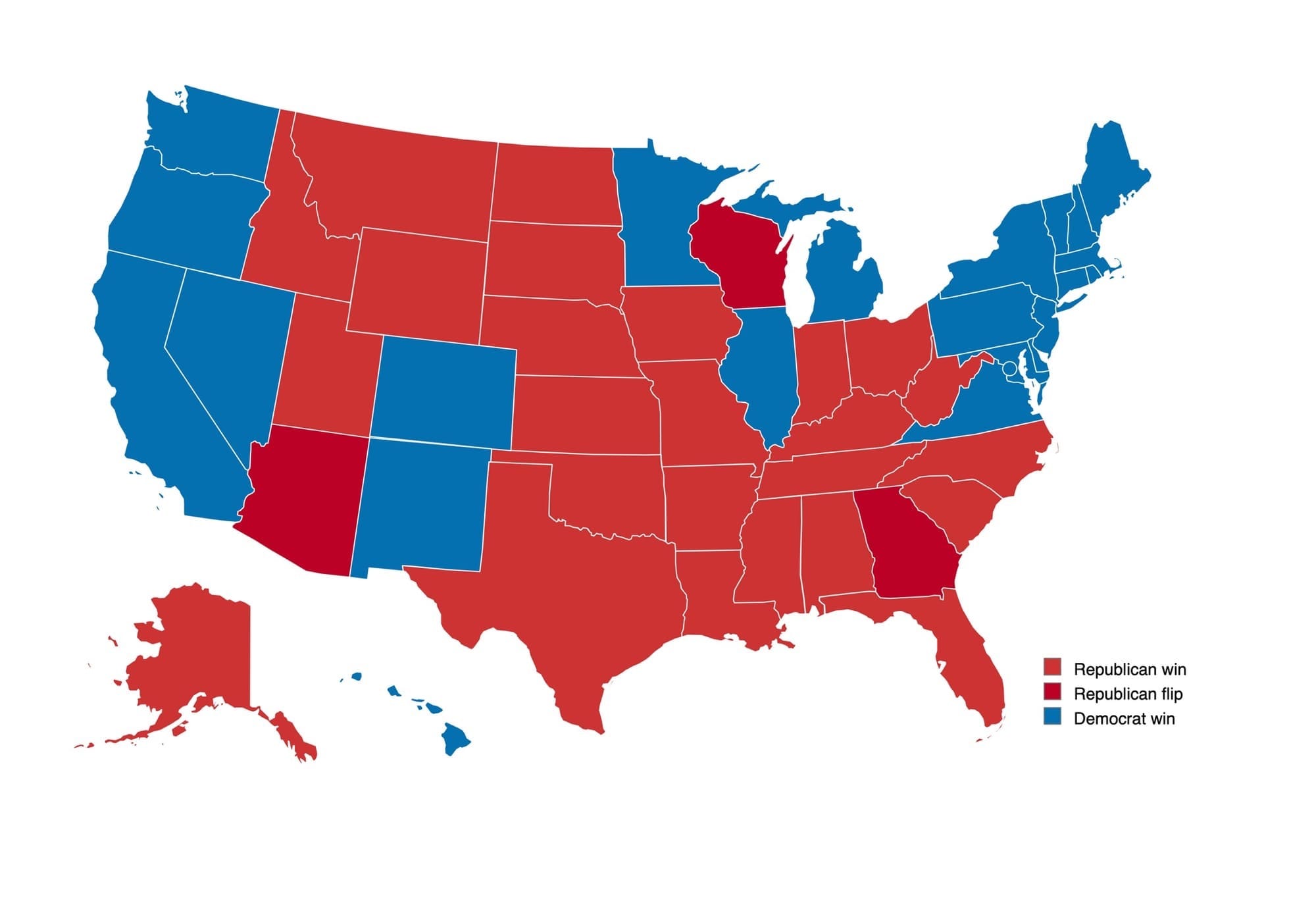The Shift: American Politics Forever Changing

With President Joe Biden and former President Donald Trump set for a 2024 rematch we've looked at polls, past presidential election results from 1980 and onwards alongside other elections such as governor, senate and house elections to see if the results might be any different.
Both candidates are deeply unpopular, both enjoying a disapproval rating of over 50% (Mr Trump slightly less disapproved). The former president is more popular in polls, however, does not hold an unsurmountable lead. The economy is a pivotal question for many voters - a seeming benefit for the incumbent considering economic performance in terms of GDP growth, unemployment rates and inflation cooling off. However, voters confidence in the economy remains negative and has done throughout the vast majority of Mr Biden's presidency. Taking the upturn in economic activity alongside an avoided recession it is a possibility that confidence in the economy goes positive, voters are already taking note with confidence growing. Such continuing trend may hand the Biden campaign the election. However, as it stands currently the economy is an issue were Mr Trump beats Biden. This prioritisation of the economy is crucial due to voters seeing abortion and democracy as the important factors, areas in which Biden beats Trump.
The map below takes these factors into account - historical results, importance of issues and more. The map remains the same in many states, however, Arizona, Georgia and Wisconsin are prone to switch according to polls and past results. These states are vital to both the Biden and Trump campaigns. The retention of Michigan, Nevada and Pennsylvania for Mr Biden is important, with the president taking back Michigan and Nevada since our last prediction. However, the past predictions verdict remains the same; Donald J. Trump is set to be the next president of the United States if this holds up. With smaller margins - the key take away.

6 states - Arizona, Georgia, Michigan, Nevada, Pennsylvania and Wisconsin - is what this comes down to, the swing-states. Some of these states won Trump 2016 and all of them voted for Biden in 2020, now they are evenly dispersed among the candidates. Mr Trump wins just barely, interestingly the same results would have garnered a perfect tie with the electoral votes of 2020 showcasing red-states growing populations. Key reasons for the map is perception of the economy, Biden's age and higher manufacturing investments - helping the rust-belt.

Arizona going red is largely due to its historical preference for the GOP, 2020 was the first time in nearly a quarter of a century that Democrats won the state. Last time 1996 Bill Clinton was the incumbent president. This alongside a strong showing in the house mid-term elections, managing to flip a net of 2 seats in a state of 9 seats, is used as reasoning for the flip. Both Senators of Arizona being Democrats is significant showcasing the urbanisation of the state that has contributed to the Democrats rise in the Grand Canyon State. Joe Biden has this going for him in the state, however, to assume that senatorial popularity might translate into a win is naive unless the senate race was won through presidential popularity. It depends, though, no matter what Arizona will be competitive. The state could come down to Phoenix if the president can pull off the same result as 2020 he may stand a real chance. However, polling currently suggests that the former president consistently out performs the incumbent by a reasonable margin.
Georgia follows the same reasoning as Arizona with historical averages even more beneficial for Mr Trump, demographic voter shifts and polling. Looking at 2020 the Democrats strategy must be to retain or even grow in cities such as Atlanta, Columbus, Augusta and Savannah alongside to see better results on the country-side. This is seemingly unlikely; Mr Biden won by a small margin in 2020 due to black voters showing up in greater numbers than ever before, however, Mr Trump has been gaining support among black voters. The senate results once again prove an area of strength for Democrats and Raphael Warnock is likely to be able to drum up support for the president considering his support.

Michigan stays blue alongside Pennsylvania - historical averages, recent results and manufacturing is why. Michigan has a long history of going blue, in presidential, senate and house election. Both senators are Democrats and in 2022 the party managed to have a net gain of house representatives in the state. The Governor of Michigan is a Democrat and Detroit contains a large portion of the states population and is a Blue stronghold. Big investment in manufacturing helps Biden's case in both states. Pennsylvania's record is blue, in 2022 John Fetterman a Democrat won a senate race meaning Pennsylvania had 2 Democratic senators; a first in nearly 80 years in terms of elected with party affiliation. 2020 suggests that Mr Biden has some wiggle room in the state being able to lose some votes (not too many) and still win. Polls hand the state to Mr Trump, however, considering past results and the so-called red-wave of 2022 that never came assuming a blue Pennsylvania in 2024 is not unreasonable.
Nevada as the other retained blue states has a blue history (since 2008), going blue in 2016 as well. The state has no particular love for Mr Trump as seen by the states preference for Mrs Clinton. Furthermore, there are only 2 major republicans in the state: the governor and a house seat, the rest are democratic. Las Vegas is a leading reason, gambling it all in Vegas could be a smart strategy for the president. A strong showing in Vegas could hand the state to Mr Biden this alongside Reno would secure the state for Democrats. 2020 saw Biden win the state with 50% of the vote closely followed by Mr Trump, the state is going to be close again, however, the past tells us that Biden stands a good chance of victory in the state.
Wisconsin turning red is due to the mid-terms being relatively strong for the GOP in this state. The changing demographics with more older voters is vital. Despite Wisconsin having a strong history of going to the Democrats as a part of the blue wall the state is changing and at that towards more conservative values. Polls suggest the former president enjoys a lead in the state as well.
Moving forward the Biden campaign must continue changing perception about the economy and Mr Biden's age. If successful votes could be gained with all 3 flipped GOP states standing a good chance of going blue for Biden in 2024. On the other hand the former president should target expanding his lead in the 3 flipped states alongside North Carolina. If possible Mr Trump could target Nevada, the least likely to go blue among the blue swing-states.



